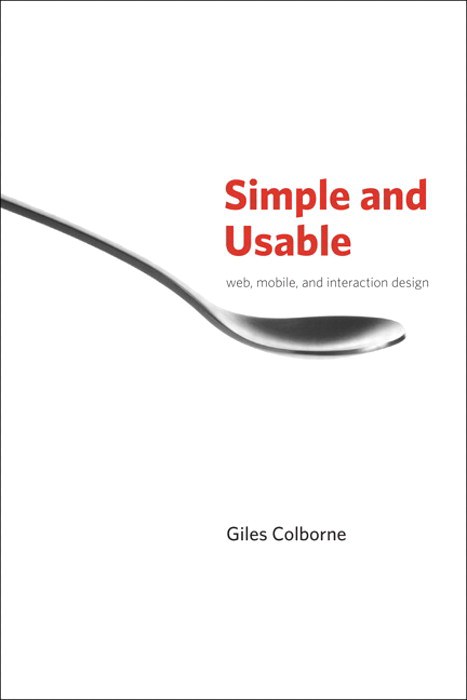
书名:Simple and Usable Strategies for Interaction Design
作者:GilesColborne
译者:
ISBN:9780321703545
出版社:NewRidersPress
出版时间:October1,2010
格式:epub/mobi/azw3/pdf
页数:208
豆瓣评分: 8.3
书籍简介:
In a complex world, products that are easy to use win favor with consumers. This is the first book on the topic of simplicity aimed specifically at interaction designers. It shows how to drill down and simplify user experiences when designing digital tools and applications. It begins by explaining why simplicity is attractive, explores the laws of simplicity, and presents proven strategies for achieving simplicity. Remove, hide, organize and displace become guidelines for designers, who learn simplicity by seeing before and after examples and case studies where the results speak for themselves. From the Back Cover
作者简介:
Giles Colborne has been designing interactive user experiences since the early 1990s and it’s about time he did something useful like writing a book.
When he’s not doing that he he’s busy with cxpartners, a design consultancy based in Bristol and London that specialises in web and mobile user interface design for companies such as Marriott, Nokia and eBay. Giles and Richard Caddick founded cxpartners in 2004.
书友短评:
@ 菠菜长颈鹿 basic but informative @ 单妮 simple, helpful and well-designed book. recommend! @ #锦二爷# 这本书是 稍微多看几本类似的就发现想法重复了,不过也能加深印象和理解。遇到一些跟自己理念不一的,我再想想吧。users make direction but you guide them. @ // 感觉内容有一点鸡汤(存讲道理的感觉)实际操作建议和例子却讲得很少。 @ yihan爱书橱 挺有趣~ @ Sai 因为工作才读的 @ 菠菜长颈鹿 basic but informative
Part 1
Why are we here?
A story about simplicity
The power of simplicity
Increasing complexity is unsustainable
Not that kind of simple
Character
Fake simplicity
Know yourself
Part 2
Setting a vision
Two ways to describe what’s core
Get out of your office
What to look for
Three types of user
Why you should ignore expert customers
Design for the mainstream
What mainstreamers want
Emotional needs
Simplicity is about control
Choosing the right “what”
Describing the user experience
Putting it all together
World, character, Extreme usability
The quick and dirty way
Insight
Getting the right vision
Share it
Part 3
Four strategies for simplicity
Simplify this
The remote control
The four strategies
Part 4
Remove
Remove
How not to do it
Focus on what’s core
Kill lame features
What if the user…?
But our customers want it
Solutions, not processes
When features don’t matter
Will it hurt?
Prioritizing features Load Decisions
Distractions
Smart defaults
Options and preferences
When one option is too many
Errors
Visual clutter
Removing words
Simplifying sentences
Removing too much
You can do it
Focus
Part 5
Organize
Organize
Chunking
Organizing for behavior
Hard edges
Alphabets and formats
Search
Time and space
Grids
Size and location Layers
Color coding
Desire paths
Part 6
Hide
Hide
Infrequent but necessary
Customizing
Automatic customization
Progressive disclosure
Staged disclosure
X doesn’t mark the spot
Cues and clues
Making things easy to find
After you hide
Part 7
Displace
Displace
Displacing between devices
Mobile vs. desktop
Displacing to the user
What users do best
Creating open experiences
Kitchen knives and pianos
Unstructured data
Trust
Part 8
Before we go
Conservation of complexity
Details
Simplicity happens in the user’s head
Photo Credits 186
Index 189
· · · · · ·
添加微信公众号:好书天下获取
 好书天下
好书天下
评论前必须登录!
注册